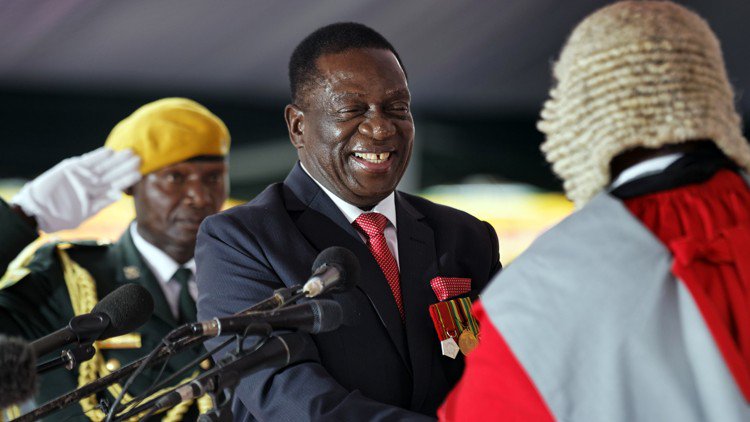By Farai Chirimumimba and Byron Mutingwende
A toast to another year coming to an end, and what a year it has been. There can be no doubt that 2017 will be remembered as one of the most eventful years in modern Zimbabwean history. From the coup and surprise exit of Robert Mugabe, downfall and ascendency of Emmerson Mnangagwa, signing of the opposition political parties pack, which formed the MDC Alliance, the dramatic split of ZimPF and the BVR roll out ahead of 2018 harmonised elections.Over 4.8 million people had registered to vote by 19 December. It’s been an historic 2017. Here’s a look at how it’s been a year of political drama.
There is no doubt that year 2017 will be remembered as one where a coup led to events that forced Robert Mugabe to resign. However, the year will also be remembered for the events that led to the November 14 military build-up and subsequent coup announcement the next day. There was serious internal strife in major political parties but was however, ruthless in the ruling ZANU-PF.
Infighting in Zanu PF, ZimPF and the MDC-T took centre stage and threatened to destroy the parties’ cohesion. The year will also be remembered for a demonstrations which rocked the country on 18 November as ordinary Zimbabweans protested against Mugabe’s misrule and mismanagement, high unemployment and the liquidity crunch, which resulted in a debilitating cash crisis. In other words demonstrators wanted Mugabe to resign.
Vicious infighting dominated the ruling party politics throughout the year. ZANU-PF’s succession wars were so severe that they spilled into cabinet, paralysing government business. The year witnessed clashes along factional lines between cabinet ministers, highlighting the dysfunctionality in government. The sharp differences between former Higher Education minister , aligned to a G40 faction which was alleged to be opposing then Vice-President Emmerson Mnangagwa replacing then President Robert Mugabe. G40 was alleged to rotate around former First Lady Grace Mugabe whilst Team Lacoste fought in Mnangagwa’s corner; illustrating how factionalism in ZANU-PF was affecting government operations as much time was wasted bickering.
Who will forget Prof Jonathan Moyo,s introduction of Dr Sydeny Sekeramayi in the succession matrix on 1 June at the SAPES Trust dialogue. Later on there was Moyo’s damaging dossier against Mnangagwa which alleged he was planning to overthrow Mugabe and was involved in a stand-off over a woman that resulted in a well known broadcaster jumping from a building sending him wheel chair bound. What of Mnangagwa’s response in October that alleged Moyo was a CIA agent who wanted destroy ZANU-PF from within.
It was also in August that Mnangagwa was alleged poisoned at a Youth Interface rally in Gwanda. Mnangagwa was later airlifted first to Gweru General Hospital and later to South Africa for medical attention. The poison saga precipitated the succession battle within ZANU-PF culminating to the Robert Mugabe 7 November bombshell on his deputy and wartime personal assistant, Emmerson Mnangagwa, axing him from government for allegedly “consistently and persistently exhibiting traits of disloyalty, disrespect, deceitfulness and unreliability”.
This propelled a series of events that led to the 14 November military build-up and subsequent coup announcement the next day. After Mnangagwa assumed power through the military coup, he elevated his erstwhile comrades General Constantino Chiwenga and Kembo to Vice Presidents.
The year will also remembered for all Zanu-PF’s 10 administrative provinces for having unanimously passed votes of no confidence in the then National Political Commissar Cde Saviour Kasukuwere, who faced a litany of accusations, including plotting to topple former President Mugabe by setting up parallel party structure. However, Kasukuwere survived the chop with the help of Grace Mugabe who took every opportunity to defend him.
In June former president Mugabe launched a 10-venue youth interface tour across Zimbabwe aimed at drumming up support ahead of the 2018 harmonised elections where he had planned to seek re-election. The 93-year-old then president, spoke for an hour-and-a-half at a rally at Rudhaka stadium in Marondera outside Harare attended by several thousand Zanu-PF supporters.
On the opposition front 2017 will be remembered as only a year after launching the Zimbabwe People First (ZimPF) party, under-fire Dr Joice Mujuru who broke ranks with the opposition party’s elders, and went on to form yet another political outfit and named it the National
People’s Party (NPP). The new party was formed under the guise of rebranding the feuding Zimbabwe People First (ZimPF) party formed on March 1, 2016. Dr Mujuru had a fallout with other founding members including Messrs Didymus Mutasa and Rugare Gumbo who all are are war veterans expelled from the ruling ZANU-PF in 2014.
Early August thousands of Zimbabweans gathered at Zimbabwe Grounds in Highfields, Harare to witness the formation of an opposition grand coalition set to take ruling ZANU-PF party in the 2018 harmonised elections.
The event attracted thousands of people drawn from Morgan Tsvangirai’s MDC-T, Professor Welshman Ncube’s MDC formation, Tendai Biti’s People’s Democratic Party and several others. All the party leaders including Agrippa Mutambara leader of Zimbabwe People First (ZimPF), Jacob Ngarivhume who lead the Transform Zimbabwe party and three others urged Zimbabweans to back the MDC Alliance in the 2018 harmonised elections, saying they will grow the country declining economy if elected in the forthcoming polls.
The year 2017 indeed marked a new chapter in Zimbabwe.This instalment did not however, exhaust all the political events of 2017 for instance the resignation of Justice Rita Makarau from the Zimbabwe electoral commission (ZEC) and the 23 September social media panic buying of
mainly cooking oil.
